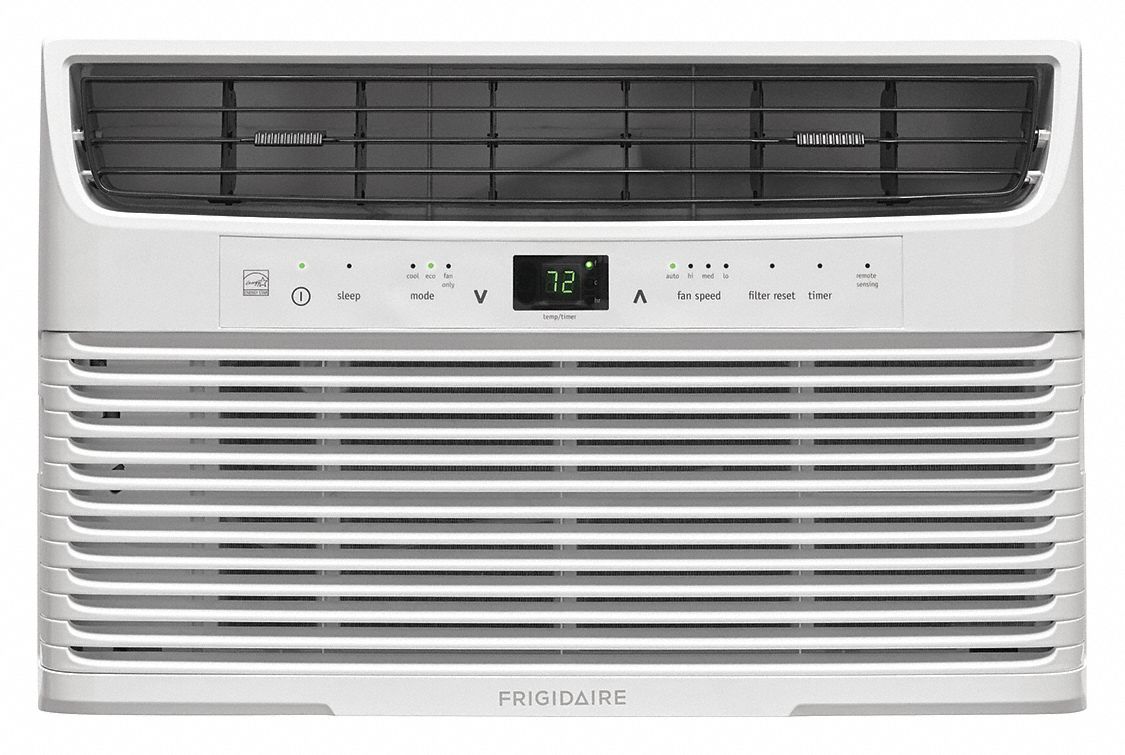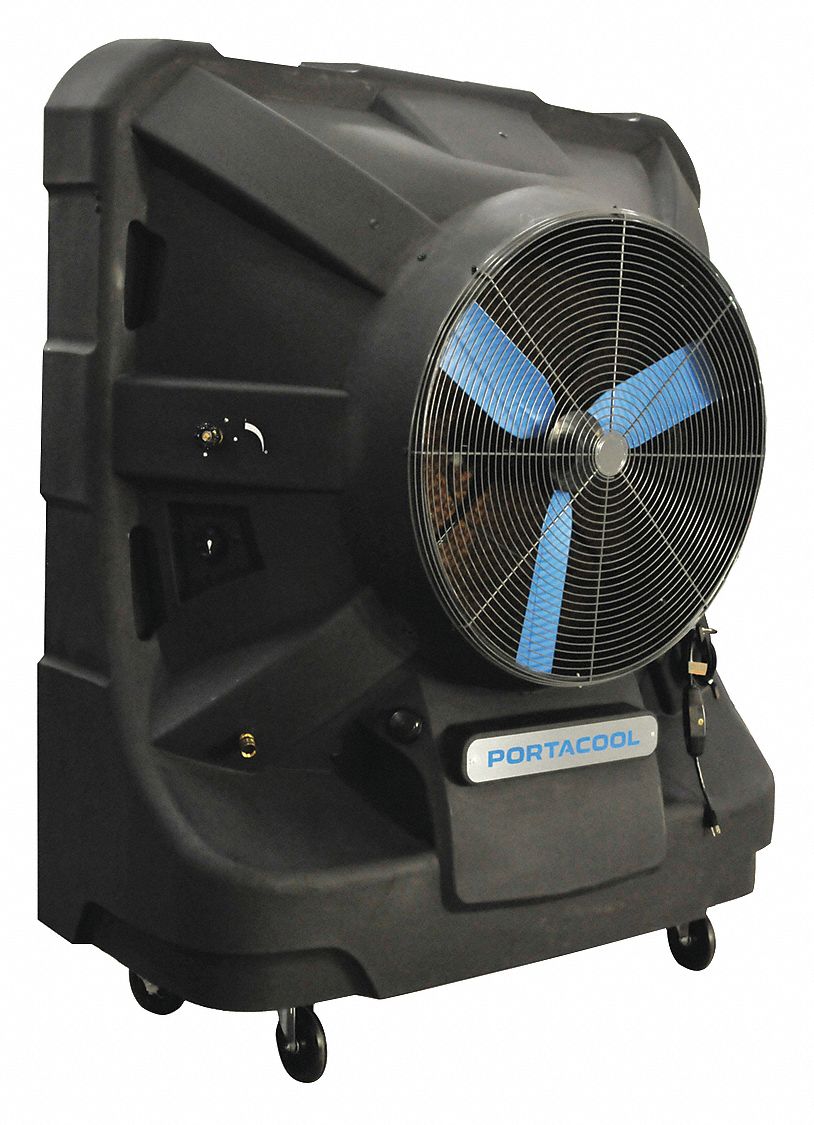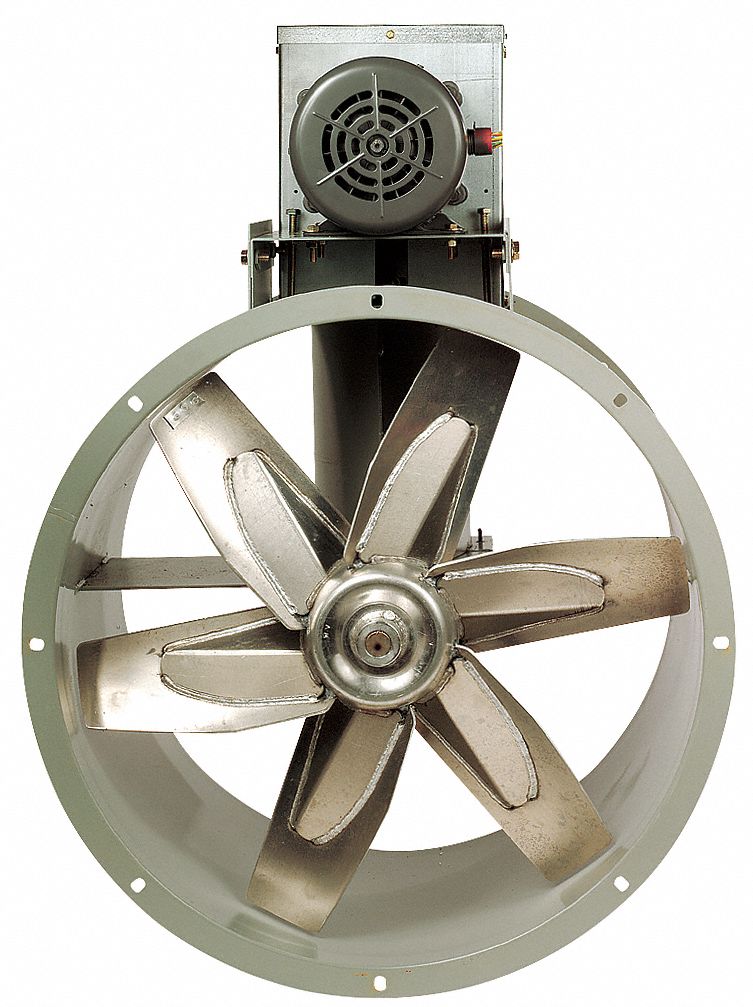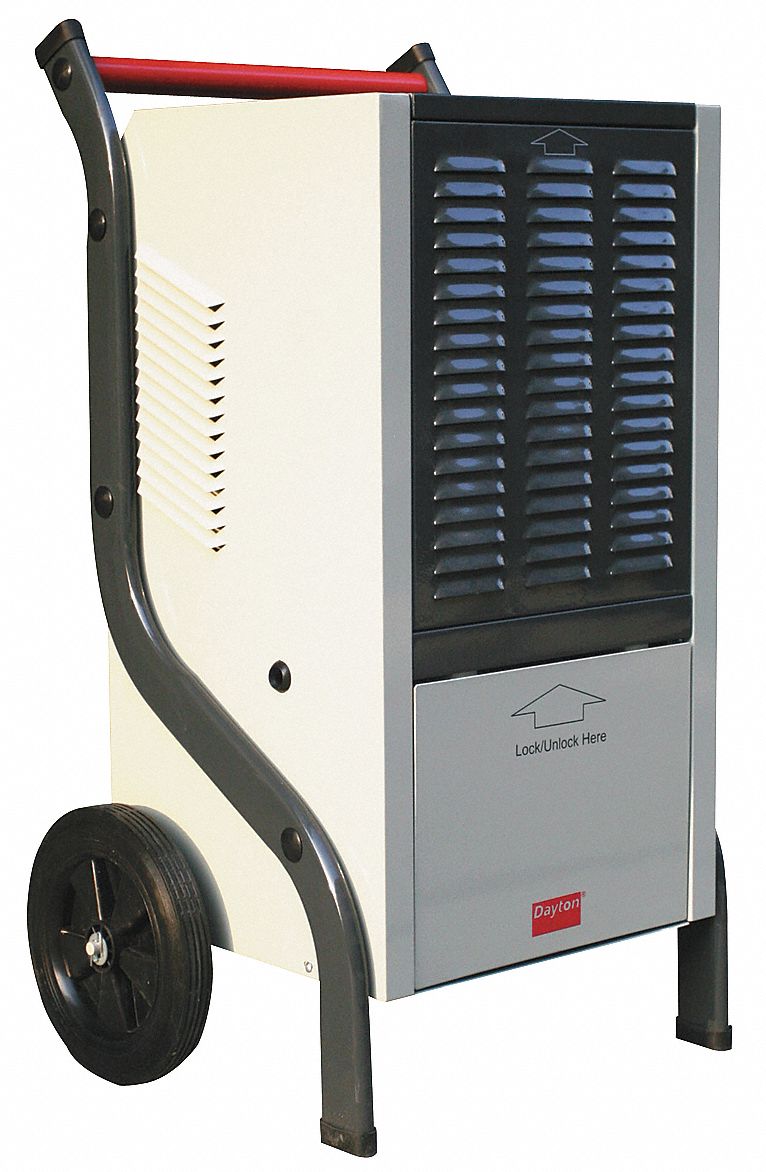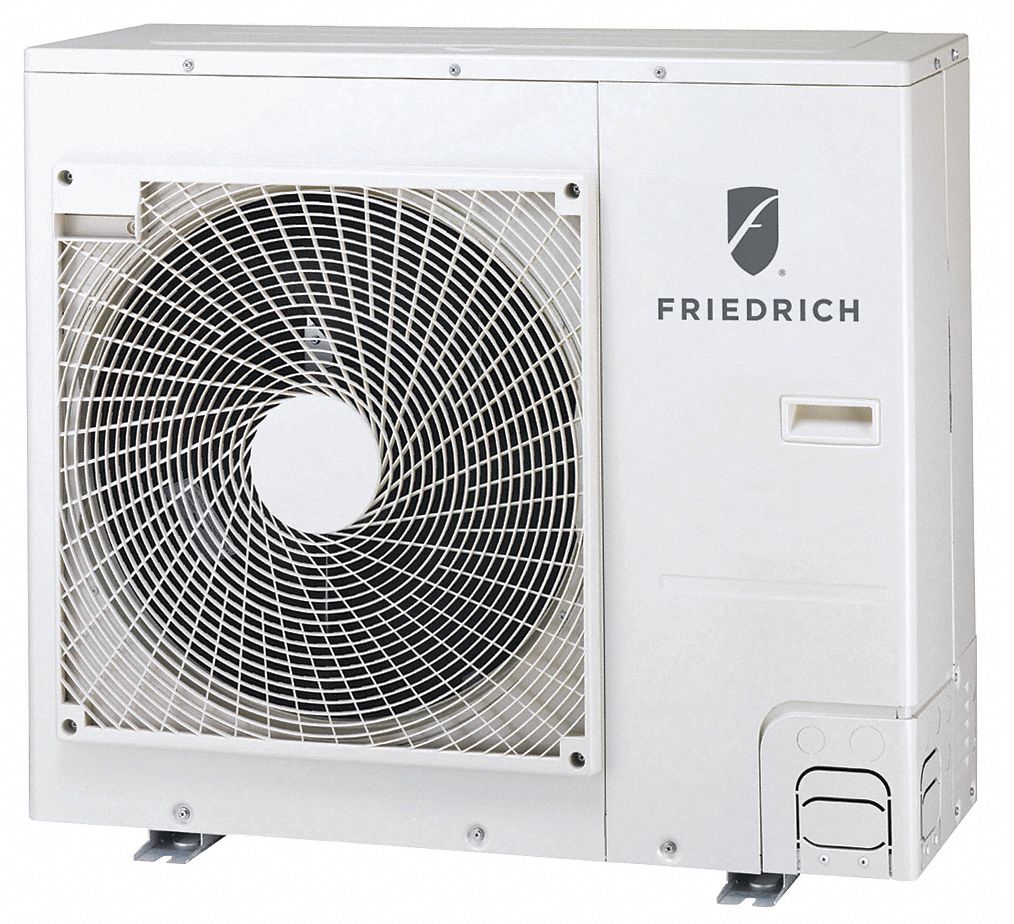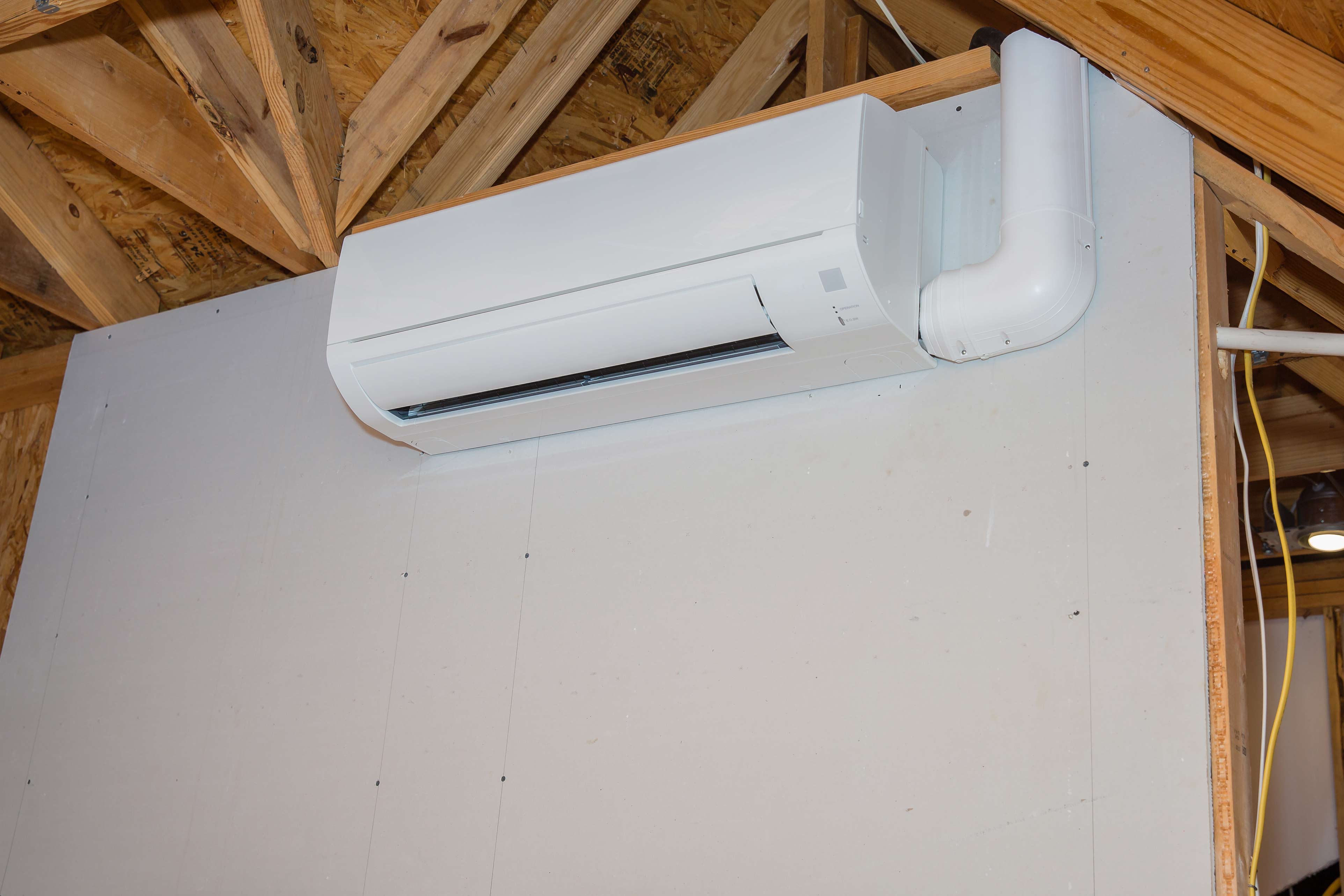

Ductless Mini-Split Air Conditioner Guide
By Grainger Editorial Staff 8/17/21


A mini-split is a type of HVAC system that does not require ductwork. Also called ductless mini-splits, these systems provide cool air using the same cooling principles as compressor-driven central air conditioners. However, many mini-splits also have heat pump capabilities, allowing them to provide warm air during cool weather.
In the right situation, a mini-split can be a cost-effective and energy efficient way to maintain a comfortable indoor temperature year-round. According to the U.S. Department of Energy's Energy Saver, mini-splits can be a good choice for purposes such as these:
- Retrofitting an HVAC system into a building without ductwork
- Adding heating and cooling capabilities to spaces where ductwork extension is impractical
- Supporting existing non-ducted heating systems such as hot water heat or wood stove heat
- Serving as the primary system for temperature conditioning in highly efficient new construction
Mini-splits are an increasingly popular option for energy-conscious homeowners. Adding air conditioning capabilities to existing homes is also becoming an attractive option in areas where central air conditioning systems are rare and where intense heatwaves are becoming more common. Because mini-splits typically require professional installation, HVAC contractors who are knowledgeable about mini-split capabilities, system design and installation options can stand out from the competition and offer valuable expertise and guidance to their clients.
How Ductless Mini-Split Air Conditioning Works
Air conditioning systems work by capturing heat energy inside a space and transporting it outside. Coolant flows in a closed loop between an interior air handler, where an evaporator coil absorbs heat from the indoor air, to an exterior condenser, where a compressor “squeezes” heat from the coolant and expels it into the outdoor air.
In a traditional central air conditioning system, the air handler unit is connected to ductwork, and a powerful fan in the air handler pushes the cooled air through the ducts and into the building. A mini-split eliminates the need for ducts because the air handler is placed inside the room, mounted on a wall or recessed in the ceiling. The air handler fan is able to blow air across its coils and directly into the room.
As in a central air system, a ductless mini-split air handler is connected to its condenser by a line set, a pair of semiflexible copper tubes that allow refrigerant to circulate between the air handler and the condenser. The line set must pass through an exterior wall, along with a power cord and condensate drain, typically through a three-inch hole.
How Ductless Mini-Split Heating Works
In addition to their air conditioning capabilities, many mini-split systems can also function as heat pumps. By reversing the coolant circuit, coolant is forced to evaporate in the outside unit’s coils and condense in the indoor air handler, effectively “pumping” heat into the building. Heat pumps are much more efficient than the electric resistance heating used by electric furnaces and space heaters. According to Energy.gov, heat pumps easily cut electricity use by 50% compared to electric resistance heating.
Historically, heat pumps have struggled in extreme cold. The system relies on heat gathered from the outside air, which can be challenging as the outside temperature drops. However, modern heat pumps are designed to operate in subzero temperatures, and the Rocky Mountain Institute (RMI) reports that even cold states like Maine, Massachusetts and Colorado are now promoting heat pumps for new home construction. According to RMI, the latest heat pump technology is now capable of performing below -10° F, but consult manufacturer guidance for specific units.
Single Zone vs. Multi-Zone Mini-Split
In a central air conditioning system, a single outdoor condenser is paired with a single indoor air handler, but mini-split systems can be installed with multiple air handlers running off a single condenser. In these multi-zone mini-split systems, each air handler has its own thermostat and is responsible for cooling or heating a separate space or zone.
There are many advantages to multi-zone mini-splits. First and foremost, a single mini-split air handler has a limited reach since there's no ductwork to distribute treated air. Many single-zone mini-splits are designed to cool less than 1,000 square feet.
Multi-zone systems are also more flexible, with independent thermostats in every zone allowing energy to be used only where it's needed. With multiple zones, you can easily limit heating or cooling in unoccupied rooms while keeping occupied spaces at a comfortable temperature.
However, multi-zone systems are more complex to install because each air handler needs a refrigerant line set to connect it to the condenser. The location of the air handlers can also restrict the placement of the condenser, because there's a limit on how long a line set can be.
Mini-Split Compressor: Inverter vs. Rotary
Improvements in mini-split compressor technology are driving efficiency gains. Until recently, mini-splits used traditional rotary compressors to circulate refrigerant through the system and drive heating and cooling. Today, more advanced mini-split systems that use inverter compressors are also available. The key difference is that rotary compressors are either on or off, while inverter compressors can run at variable speeds depending on how much cooling or heating is needed, which can improve efficiency. According to Energy Star, variable-speed compressors and fans can drive lower cooling and heating costs in Energy Star certified units.
Mini-Split Efficiency
There are several additional reasons why ductless mini-splits can be an efficient source of cooling and heating:
Independent cooling zones. Most importantly, zone systems allow separate spaces within a building to be heated or cooled independently, which helps prevent energy from being wasted in unoccupied spaces, or in spaces that are already at an acceptable temperature. This can be a major advantage compared to central systems that must condition air throughout a building.
No energy-leaking ductwork. Another mini-split efficiency advantage when compared with central HVAC is the lack of ductwork. According to Energy Saver, more than 30% of the energy used in central air conditioning systems can be lost through ductwork, especially if the ducts travel through attics or other unconditioned spaces that can get extremely hot in the summer.
Separation of evaporator and condenser. Ductless mini-splits also have an efficiency advantage when compared with window units and portable air conditioners. In a mini-split system, the evaporator and condenser are on opposite sides of an insulated exterior wall. No heat can leak from the hot condenser coils outside to the cold evaporator coils inside. On the other hand, window units and portable unit have relatively thin heat shields that separate the two sides of the loop within the unit, and a considerable amount of waste heat can find its way across the gap.
Avoidance of inefficient resistance heating. When functioning as heat pumps, mini-split systems are much more efficient than other types of electric heater. According to Energy Saver, heat pumps can reduce electricity consumption by about half compared to electric resistance heaters such as electric furnaces or baseboard heaters.
Mini-Split Ratings: Heating Power, Cooling Power and Efficiency
Mini-split systems have several performance ratings.
- Cooling capacity is rated in BtuH, or British thermal units per hour.
- Heating capacity is rated in BtuH for units with heat pump functionality.
- In multi-zone mini-split systems, the heating and cooling capacities of the air handlers and the outdoor condenser are rated separately.
- Cooling efficiency is described by a seasonal energy efficiency ratio (SEER) rating. Higher SEER units are more efficient, and the numbers are linear—a unit with a SEER of 20 is theoretically twice as efficient as a unit with a SEER of 10, and would use half as much electricity over the summer.
Local utility companies may offer rebates for upgrading to a high efficiency ductless mini-split, and there may be tax incentives as well. Energystar’s Rebate Finder are great resources to learn more about incentives.
Mini-Split Air Handlers: Ceiling Cassette and Wall-Mounted Units
Ductless mini-splits also offer options for the placement of the air handler. Wall-mounted units provide the simplest installation and maintenance. Typically, the air handler hangs high on the wall to allow chilled air to sink into the room. The refrigerant line set can exit the building through the wall directly behind the air handler, simplifying installation, and the unit can be easily accessed for maintenance and cleaning.
However, HVAC professionals should be aware that there are alternatives for clients who don't like the aesthetics of wall-mounted air handlers. For example, there are units that are designed to be recessed into the ceiling or hidden entirely with a short piece of ductwork. This complicates installation and maintenance—in addition to cutting a hole in the ceiling, you may also want to route the line set conduit behind the drywall. But clients who place a premium on aesthetics may consider the associated costs worthwhile.
Mini-Split Alternatives
Ductless mini-splits are a popular choice for retrofitting air conditioning into older buildings without existing ductwork. However, professional installation is usually recommended. For cooling capacity that can easily be installed without an HVAC technician, building managers can consider window air conditioners and portable air conditioners. In hot, dry climates, evaporative coolers can also be a good option.
Frequently Asked Questions
Q: How is a ductless mini-split different from central air?
A: Instead of blowing air through ducts from a central air handler, a ductless mini-split places the air handler directly inside the occupied room. Unlike a central air system, which has a single air handler, multi-zone mini-splits have several independent air handlers.
Q: What's the difference between single and multi-zone ductless mini-splits?
A: Single zone mini-splits have one indoor air handler and one outdoor condenser. A multi-zone system uses a single condenser to provide cooling to several indoor air handlers, each of which is connected by a refrigerant line set to the condenser. This allows the system to cool more space, and to cool separate spaces independently with independent thermostats.
Q: Does a ductless mini-split’s air handler have to hang on the wall?
A: No. The air handler should be installed above floor level, but it can be recessed in the ceiling or hidden entirely with a short piece of ductwork.
Q: How can I tell which mini-split heat pumps are suitable for colder climates?
A: Heating seasonal performance factor (HSPF) is an industry-standard measure that describes how efficient a heat pump is over the full heating season, based on testing methods developed by the Air-Conditioning and Refrigeration Institute. Energy Star recommends looking for an Energy Star certified unit with an HSPF above 12 if low-temperature performance is a concern.
The information contained in this article is intended for general information purposes only and is based on information available as of the initial date of publication. No representation is made that the information or references are complete or remain current. This article is not a substitute for review of current applicable government regulations, industry standards, or other standards specific to your business and/or activities and should not be construed as legal advice or opinion. Readers with specific questions should refer to the applicable standards or consult with an attorney.

